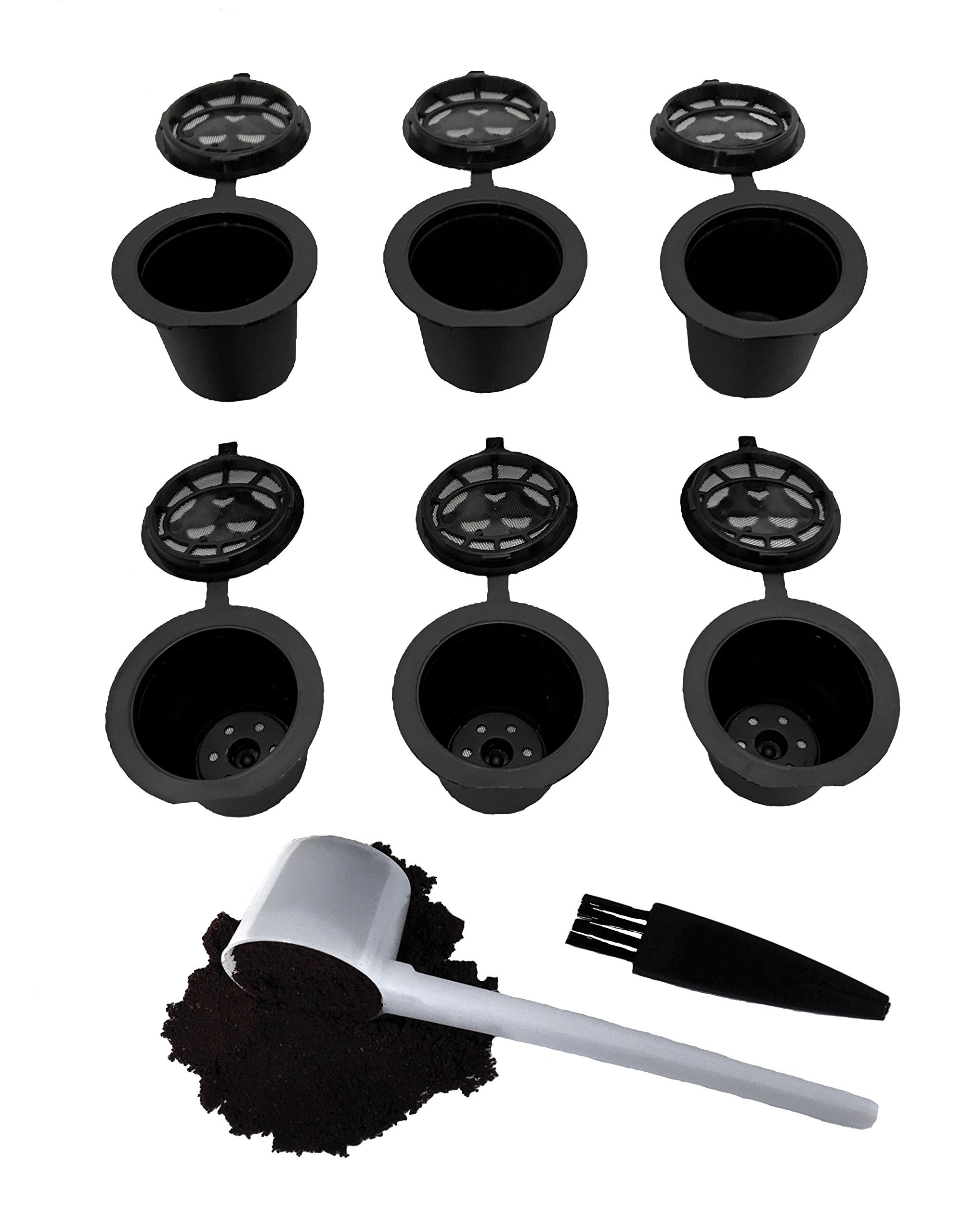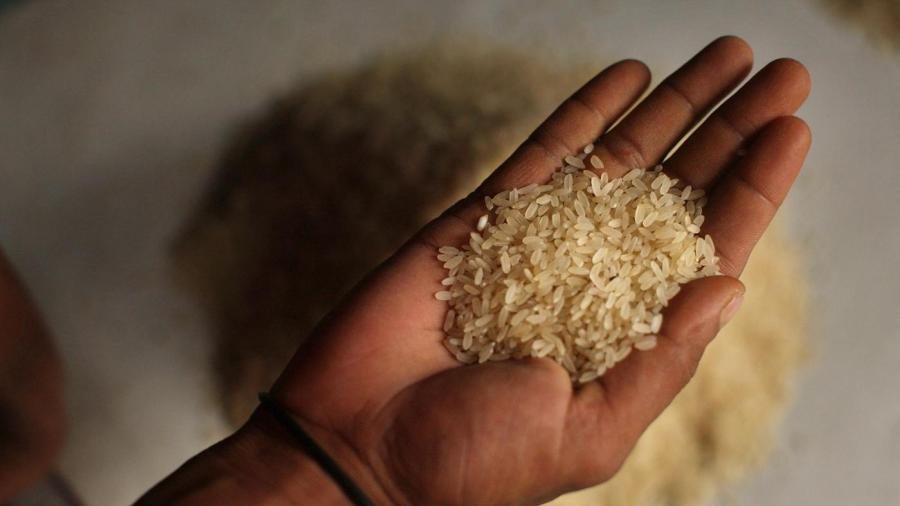
Finding the Best Crypto Casino for Safe and Fun Play
The world of online gambling has evolved significantly in recent years, with cryptocurrency casinos becoming a popular choice for players around the globe. These platforms allow users to gamble with digital currencies like Bitcoin, Ethereum, Litecoin, and others, offering advantages such as faster transactions, enhanced privacy, and global accessibility. However, with the rise of Best Crypto Casino, it is essential for players to know how to find the best and safest options for enjoyable play.
Why Choose a Crypto Casino?
Crypto casinos offer several benefits over traditional online casinos. First, they provide faster deposits and withdrawals. Unlike standard banking methods, which can take days to process, cryptocurrency transactions are usually completed in minutes. Additionally, they allow greater anonymity, as players often only need an email address and wallet to start playing, rather than submitting extensive personal and financial details. Many crypto casinos also offer lower fees, higher deposit bonuses, and access to exclusive crypto-based games.
Despite these advantages, not every crypto casino is trustworthy. The lack of regulation in some jurisdictions means that players must be cautious and informed when selecting a platform.
Key Factors to Look for in a Crypto Casino
- Licensing and Regulation
The first step in identifying a safe crypto casino is checking its license. Reputable platforms are regulated by recognized authorities such as the Malta Gaming Authority or the Government of Curaçao. Licensing ensures that the casino adheres to fair play standards and has mechanisms to protect players from fraud. - Game Variety and Software Providers
A good casino should offer a wide selection of games, including slots, table games, live dealer experiences, and even provably fair crypto-exclusive games. The presence of well-known software providers like Microgaming, NetEnt, or Evolution Gaming is a strong sign of quality and fairness. - Security Measures
Since transactions involve cryptocurrencies, top-level security is non-negotiable. The best casinos employ advanced encryption methods, two-factor authentication, and cold storage for funds. These measures protect both player accounts and deposited assets. - Reputation and Reviews
Checking player reviews and community discussions is one of the most effective ways to gauge a casino’s reliability. A platform with consistent complaints about payouts, rigged games, or poor customer service should be avoided. On the other hand, casinos with a solid track record of positive user experiences are likely safer choices. - Payment Options and Speed
Flexibility in accepted cryptocurrencies is another key feature. While Bitcoin remains the most common option, many casinos also support Ethereum, Litecoin, Ripple, and stablecoins like USDT. Players should also evaluate withdrawal times. The best platforms process payouts instantly or within a few hours. - Bonuses and Promotions
Bonuses are a big draw for players, but they should always be examined carefully. Legitimate casinos offer clear terms and conditions for their promotions. Excessively generous offers with hidden restrictions may indicate a less trustworthy operator.
Provably Fair Gaming
One of the unique features of crypto casinos is the concept of provably fair gaming. This system uses blockchain technology to ensure that game outcomes are transparent and cannot be manipulated by the operator. Players can independently verify results, which adds a layer of trust that traditional casinos cannot easily match. Choosing a casino that offers provably fair games enhances both security and entertainment.
Customer Support and User Experience
A responsive support team is essential in case issues arise. The best crypto casinos offer 24/7 support via live chat, email, or even community channels. Additionally, the website or app should provide a smooth, user-friendly experience. Complicated layouts or constant glitches are red flags that may point to poor management.
Responsible Gambling
Safe play is not only about avoiding scams but also about maintaining healthy gaming habits. A responsible crypto casino provides tools for setting deposit limits, time restrictions, and self-exclusion options. These measures help players enjoy their experience without risking financial or emotional harm.
Conclusion
Finding the best crypto casino requires a careful balance of fun and safety. By focusing on licensing, game selection, security, community reputation, and responsible gaming practices, players can enjoy the unique benefits of cryptocurrency gambling with confidence. While the world of crypto casinos offers exciting opportunities, choosing the right platform ensures that your experience remains secure, fair, and truly entertaining.

MPO2121 Online Casino With Tutorials and Tips for Enhancing Gameplay
Online casinos have transformed the way players experience gaming, offering convenience, excitement, and the opportunity to develop skills from the comfort of home. MPO2121 Online Casino stands out by not only providing a wide variety of engaging games but also offering tutorials and tips designed to help players enhance their gameplay. By combining entertainment with educational resources, the platform ensures that both beginners and experienced users can enjoy a more rewarding online casino experience.
Comprehensive Tutorials for Beginners
A key feature of MPO2121 Online Casino is its comprehensive tutorials for beginners. These guides cover essential aspects of various games, including rules, strategies, and best practices. For games such as blackjack, roulette, poker, and video slots, the tutorials explain gameplay mechanics in detail, helping new players understand betting options and winning strategies. By providing step-by-step instructions and clear examples, MPO2121 empowers beginners to play with confidence and avoid common mistakes, making the gaming experience more enjoyable and less intimidating.
Expert Tips for Advanced Players
In addition to tutorials for beginners, MPO2121 Online Casino offers expert tips for players who want to refine their skills. These tips focus on strategic gameplay, bankroll management, and game-specific techniques. By following these insights, players can make informed decisions, optimize their strategies, and improve their chances of success. The platform emphasizes responsible gaming while offering practical advice, encouraging players to stay in control of their play and maintain a balanced gaming experience.
Wide Selection of Games
MPO2121 Online Casino provides an extensive library of games to suit every type of player. Traditional options like blackjack, baccarat, and roulette sit alongside modern video slots, progressive jackpots, and interactive poker variants. The platform partners with leading software providers to ensure that games are fair, visually engaging, and technically reliable. Regular updates introduce new titles, keeping the gaming library fresh and giving players opportunities to apply strategies learned from tutorials and tips.
Interactive Learning and Practice Modes
To enhance learning, MPO2121 Online Casino includes interactive features and practice modes. Many games offer demo versions that allow players to try strategies and explore game mechanics without risking real money. This hands-on approach complements the tutorials, enabling players to gain practical experience before playing for real stakes. Practice modes provide valuable feedback, helping users refine their skills and approach each game with greater confidence.
User-Friendly Interface
The platform’s intuitive interface makes accessing tutorials, tips, and games simple and efficient. Players can navigate between instructional content, account management, and the game library without difficulty. Features such as search functions, categorized menus, and personalized recommendations ensure a smooth experience, allowing users to spend more time learning and playing instead of navigating complex systems.
Supportive Community and Customer Assistance
MPO2121 Online Casino fosters a supportive community where players can share insights, ask questions, and exchange tips. Additionally, the platform offers responsive customer support through live chat and email to address technical issues or inquiries. This combination of community engagement and professional assistance enhances the player experience, creating an environment where learning and gaming go hand in hand.
Conclusion
MPO2121 Online Casino delivers a unique combination of entertainment and educational resources through tutorials and expert tips. By offering guides for beginners, strategic advice for advanced players, interactive practice modes, and a diverse game library, the platform empowers users to improve their skills and enjoy a more rewarding gaming experience. With its user-friendly interface, supportive community, and focus on responsible gaming, MPO2121 Online Casino ensures that players can enhance their gameplay, build confidence, and enjoy every session to the fullest.

11BOLA Slots and Table Games Designed for Maximum Player Engagement
The online gaming industry has seen remarkable growth in recent years, with players seeking more interactive and immersive experiences. 11BOLA has emerged as a prominent platform that focuses on delivering slots and table games designed for maximum player engagement. By combining innovative game design, high-quality graphics, and user-friendly features, 11BOLA ensures that every gaming session is entertaining, rewarding, and captivating for both new and experienced players.
Immersive Slots Experience
One of the core attractions of 11BOLA is its wide variety of slot games. These games are developed with captivating themes, vibrant visuals, and engaging sound effects that enhance the overall gaming experience. From classic three-reel slots to modern video slots with intricate storylines, the platform offers options that appeal to different player preferences.
Interactive features such as bonus rounds, free spins, and multipliers are incorporated into the slots, providing additional excitement and opportunities for bigger rewards. These features encourage players to explore different games and experiment with strategies, keeping them engaged for longer periods. The combination of visual appeal, dynamic gameplay, and rewarding mechanisms ensures that slots on 11BOLA remain both entertaining and challenging.
Engaging Table Games
In addition to slots, 11BOLA offers a comprehensive selection of table games, including blackjack, roulette, baccarat, and poker. These games are designed to replicate the experience of a physical casino while adding the convenience of online access. Professional-grade graphics and realistic animations create an immersive environment where players can focus on strategy, decision-making, and competitive play.
The platform also features live dealer table games, allowing players to interact with real dealers in real-time. This interaction enhances engagement by adding a social element to online gaming, making players feel part of a dynamic and lively casino atmosphere. The live gaming experience combines authenticity with convenience, providing a unique blend of excitement and realism.
User-Friendly Design and Accessibility
11BOLA prioritizes user experience by offering a platform that is easy to navigate and accessible across multiple devices. Players can quickly find their favorite slots or table games, track progress, and manage account settings without unnecessary complexity. The platform’s responsive design ensures that games load quickly and operate smoothly on desktops, tablets, and mobile devices, enabling uninterrupted gameplay anytime and anywhere.
By simplifying navigation and providing intuitive controls, 11BOLA allows players to focus on enjoying their favorite games rather than dealing with technical difficulties or confusing interfaces. This user-friendly design is crucial for maintaining player engagement and encouraging long-term loyalty.
Rewarding Features and Incentives
To further enhance engagement, 11BOLA incorporates various rewarding features such as loyalty programs, bonuses, and promotions. Players can earn points, unlock special rewards, and participate in tournaments, which adds an element of excitement and motivation. These incentives not only increase player retention but also encourage exploration of new games and features on the platform.
Regular updates and seasonal events keep the gaming experience fresh, offering new challenges and opportunities for players to earn rewards. By continuously adding value through bonuses and promotions, 11BOLA ensures that players remain engaged and motivated to return frequently.
Fairness and Security
Ensuring fair play is essential for player trust and engagement. 11BOLA uses certified random number generators (RNGs) for its slots and table games, guaranteeing unbiased outcomes for every game. Additionally, the platform implements robust security measures to protect player data and transactions, providing a safe environment for gaming.
Conclusion
11BOLA combines visually appealing slots, engaging table games, user-friendly design, and rewarding incentives to create a platform that maximizes player engagement. With immersive gameplay, interactive features, live dealer options, and a secure environment, the platform provides an online gaming experience that is both exciting and reliable. Players can enjoy a dynamic mix of slots and table games while benefiting from fair play, responsive design, and continuous rewards, making 11BOLA a premier choice for entertainment and engagement in the online casino world.
How to Enjoy a Peaceful EBC Trek Without Crowds: Your Secret Plan

The Everest Base Camp trek is undoubtedly the most popular trek in the world. Somewhere between the lap of the Himalayas and the sky high, people from thousands of miles away come to carry out this unbelievable journey to be in awe of the majestic Himalayas and to eventually be at the mythical Everest Base Camp. Yet fame brings crowds, and sometimes — particularly during the high trekking seasons — that serenity that so many come to experience is diluted.
So, if you have been nursing fantasies of a tranquil, crowd-free hike wherein you come to know and deeply appreciate the unspoiled beauty, the peace, and the quiet of the place, this guide is it, the cheat. Easier Everest treks Key facts Though we’ve also made sure to give a lot of consideration to when you should visit and some top tips for the region, you really can experience the wonderful scenery and local culture of the Everest region without facing the crowds that you might expect on such a well-known hiking route.
Choosing the Perfect Season for EBC Trek
When you hike can also change how many other hikers there happen to be. There are induction into the Everest Base Camp Trek itinerary is height trek low seasons:pre-monsoon (spring), with monsoon (March-May additionally), and post-monsoon (autumn: late September to November). At some stage in these months, tourists are maximum likely to discover the satisfactory climate and clearest skies for trekking.
To break out the throngs, bear in mind trekking within the shoulder, from late November to February or the primary half of March. The path is much emptier at some stage in these cold months; a number of the facilities may be closed, but you get to enjoy the path at your own pace within the peacefulness of the mountains. In case you’re inclined to courageous the cold and you’ve got the tools, the serene revel in can be very profitable.
Choose Detours and Side Tacks
And most trekkers indeed follow the standard itinerary for the Everest Base Camp Trek, which follows the conveyor belt of a trail through the usual trekking towns of Namche, Dingboche, and Gorak Shep. But there are lots of other options in the Everest place for all of us who like to get away from it all.
Take smaller roads to little-visited villages like Phakding, Monjo, or Khumjung. These are locations with a genuine Sherpa way of life and terrific views, minus the crowds. Facet treks to Gokyo Lakes or the Chhukung Valley are also super methods to get away from all of it and spot glaciers and the Himalayas range without the crowds.
Start Early or Hike at the End of the Day
The second trick to having the place to yourself on your Mount Everest Base Camp Tour is to tinker with your schedule. Many trekkers start later in the day and hit popular stops during rush hour. Begin in the early morning, and you can log many miles before the trail gets crowded.
Likewise, a hike in the late afternoon affords you peace while others are resting inside their lodges. It requires some planning and pacing, but this trick will provide you with long, tranquil stretches of trail to take a quiet moment, snap a photo, or just walk without others breathing down your neck.
Book Early and Don’t Miss the Everest Base Camp Trek with Less Crowd
The group size is one of the most important things for your experience on the trek. Larger groups usually move more slowly, require more space at lodging facilities, and pay more attention to teahouses, further contributing to the number of people.
Choosing a small group Everest Base Camp Trek package or choosing private guiding could prove to be the difference between the two. Smaller groups lend themselves to more flexibility, the ability to go at our own pace, to avoid some of the overly crowded trails, nd just a more intimate, peaceful trekking experience.
BE MINDFUL AND UNPLUG FROM TECHNOLOGY
And half the fun of a peaceful hike like that is not being able to think about anything but the moment. And to ensure that your Everest Base Camp Trek is truly a getaway from the clamor of the world of today, one thing you certainly don’t want it to be is an ongoing technological relationship. Get off phones and social media without revisiting and revisiting and focus on the surroundings, the clear mountain air, the crunch of stepping, and the silent but mighty form of Everest itself.
On acclimatisation days or rest days, doing some mindfulness meditation can help you feel more connected and can add to the sense of peace and tranquillity in the environment.
Environmental and cultural sensitivity
Environmental preservation and respect for local people also contribute to peaceful trekking. Leave No TracePack out what you take in, keep the noise down, and respect the wildlife.
Participating and learning about the Sherpa people, their culture, and participating in cultural events or visiting the monasteries are the extra values from your trek and good for a compatible living. The quieter you stand, the more peaceful, more you are in the Everest Base Camp Trekking trip to Nepal.
Conclusion
How to make an Everest Trek peaceful. Hiking the Everest Base Camp far away from the masses is viable and may be finished way of smart strategies and a be counted mindset. By choosing the proper season, discovering much less-traveled routes, adapting your hiking times, and deciding on a small institution, you may make some time on the path an epic one without the crowds.
No matter whether you are doing an Everest Base Camp Tour with a professional company or booking our very own Everest Base Camp Trek cost, the following tips will help you get the most out of the Himalayas and the culture of the highest mountain on the planet.
Your personal Road to a holistic, inspiring journey is here -walk on it and feel the serene magic around the Everest just like you have never before!

Play Spinometal Casino Slots with Unique Gameplay and Bonus Features
Online slot games have become a major attraction in the world of digital entertainment, offering players engaging gameplay, dynamic visuals, and exciting rewards. Among the wide array of slot platforms, play spinometal casino slots stand out for their innovative features, unique themes, and interactive bonus systems. These slots provide players with an immersive experience, combining classic gaming elements with modern mechanics that appeal to both new and experienced players.
Diverse Range of Slot Games
Spinometal offers an extensive selection of slot games designed to cater to varied preferences. Players can explore traditional fruit-themed slots, adventurous story-based games, and high-tech futuristic options. Each slot comes with visually striking graphics and themed soundtracks that enhance the gaming atmosphere. This variety ensures that players remain engaged and entertained, with the opportunity to discover new favorites while enjoying familiar classics.
Innovative Gameplay Mechanics
One of the distinguishing features of Spinometal casino slots is their unique gameplay mechanics. Unlike standard slots, these games often include special symbols, interactive bonus rounds, and cascading reels that create dynamic outcomes. Players encounter engaging features such as multipliers, expanding wilds, and free spin triggers, which increase the chances of winning while adding layers of strategy and excitement. This innovation keeps gameplay fresh and encourages players to explore different slots for diverse experiences.
Interactive Bonus Features
Spinometal slots are known for their compelling bonus features that reward players beyond standard paylines. Free spin rounds, pick-and-win games, and mystery symbols offer opportunities for extra rewards and enhanced winnings. Some slots include progressive jackpots, allowing players to compete for large, accumulative prizes that grow with every spin. These bonus mechanisms make every game session unpredictable and thrilling, motivating players to continue exploring different slots to unlock unique rewards.
User-Friendly Interface and Accessibility
The Spinometal platform is designed with user experience in mind. Navigation is intuitive, making it easy for players to select games, adjust bet sizes, and monitor their winnings. Slots are optimized for multiple devices, including desktops, tablets, and smartphones, ensuring seamless play on the go. This accessibility allows players to enjoy immersive slot experiences anytime and anywhere, without sacrificing visual quality or gameplay performance.
Secure Transactions and Fair Gaming
Security and fairness are critical in online casino gaming, and Spinometal ensures both through advanced encryption protocols and regulated gaming practices. Players can deposit funds and withdraw winnings securely, knowing that their financial information is protected. Additionally, the platform employs certified random number generators (RNGs) to ensure that outcomes are fair and unbiased. This commitment to security and integrity builds trust among players and encourages responsible gaming.
Promotions and Reward Programs
Spinometal enhances the gaming experience through various promotions and reward programs. New players often benefit from welcome bonuses that provide extra spins or credits to explore slot games. Regular players can enjoy loyalty programs, cashback offers, and seasonal promotions that keep the experience rewarding. These incentives increase engagement and provide additional value, allowing players to maximize their enjoyment while trying new games.
Conclusion
Spinometal casino slots offer a unique blend of innovative gameplay, interactive bonus features, and engaging visuals that make online gaming exciting and immersive. The platform’s diverse selection of games, user-friendly interface, and secure operations ensure a satisfying experience for players of all levels. By combining classic slot elements with modern mechanics and rewarding bonuses, Spinometal has created a dynamic environment where entertainment and opportunity go hand in hand.
Players can enjoy hours of engaging gameplay, explore new themes, and benefit from rewarding bonus features, all within a secure and accessible platform. Spinometal demonstrates how creativity and technology can redefine online slot gaming, offering an experience that is both thrilling and rewarding.

Slot88 Live Casino and Interactive Slots for an Immersive Gaming Experience
The online casino industry has experienced remarkable growth in recent years, driven by advances in technology and the increasing demand for engaging gaming experiences. slot88 has positioned itself as a leading platform by offering both live casino games and interactive slots, providing players with an immersive and entertaining environment. This combination allows users to enjoy the excitement of real-time gaming while experiencing the thrill and variety of modern slot machines.
The Appeal of Live Casino Games
Live casino games replicate the experience of a physical casino by streaming real dealers in real-time. Slot88 offers a range of live games, including blackjack, roulette, baccarat, and poker. Players can interact with professional dealers and other participants through live chat features, creating a social and interactive gaming atmosphere. This real-time interaction enhances engagement and gives players the sense of being part of an authentic casino environment without leaving the comfort of their home.
Live casino games also utilize advanced streaming technology to ensure smooth gameplay and minimal latency. High-definition video quality and professional audio make every spin, shuffle, and deal feel realistic. By combining live action with online convenience, Slot88 delivers an experience that appeals to both novice and experienced players looking for authenticity and excitement.
Interactive Slots for Dynamic Entertainment
In addition to live casino offerings, Slot88 features a wide variety of interactive slot games. These slots go beyond traditional gameplay by incorporating engaging themes, animations, sound effects, and bonus features. Players can explore story-driven slots, multi-line games, and progressive jackpots, offering endless entertainment and opportunities to win.
Interactive slots on Slot88 are designed to be user-friendly while providing advanced gaming features. Autoplay functions, adjustable paylines, and customizable bet amounts enhance the overall experience. Modern slot games also include unique mechanics such as cascading reels, multipliers, and free spins, adding layers of excitement and unpredictability to each session.
Seamless Integration for a Complete Experience
Slot88 stands out by seamlessly integrating live casino games and interactive slots into a single platform. Players can easily switch between different types of games depending on their mood and preferences. Whether they want the strategy and interaction of a live table game or the fast-paced thrill of an interactive slot, the platform caters to diverse gaming styles.
The integration also allows for a smooth and intuitive user interface. Game menus, account management, and promotions are easily accessible, ensuring that players can focus on gaming rather than navigating complex systems. This approach creates a comprehensive online casino experience that feels cohesive and enjoyable.
Security and Fair Play
Security and fairness are essential elements of any reputable online casino. Slot88 employs advanced encryption technology to protect personal and financial information, ensuring that all transactions remain secure. Additionally, the platform uses certified Random Number Generator (RNG) technology for interactive slots and works with licensed gaming providers for live casino games. This guarantees fair outcomes and builds trust among players.
Mobile Accessibility and Convenience
Slot88 also emphasizes mobile accessibility, allowing players to enjoy live casino games and interactive slots on smartphones and tablets. The mobile platform is optimized for touch controls, high-resolution displays, and responsive performance, ensuring a seamless experience across all devices. This mobility enables players to enjoy gaming anytime and anywhere without compromising quality or security.
Conclusion
Slot88 provides a unique and immersive gaming experience by combining live casino games with interactive slots. The platform offers real-time engagement, dynamic gameplay, and a secure environment that caters to both casual and experienced players. With its user-friendly interface, mobile compatibility, and diverse game selection, Slot88 delivers an entertaining and reliable online casino experience. Players can enjoy the excitement of live tables and the thrill of modern slots, making every gaming session engaging and memorable.

The Best Poker Promotions at TC Lottery
Poker has always been a game of skill, patience, and strategy. But when paired with exciting promotions, it becomes even more rewarding. TC Lottery Poker is known not only for its fair gameplay and secure platform but also for offering some of the most attractive promotions in the online poker industry. These promotions give players a chance to boost their bankrolls, extend playing time, and maximize potential winnings.
In this article, we’ll explore the best poker promotions at TC Lottery and why they make the platform a top choice for both casual players and seasoned professionals.
Welcome Bonuses for New Players
The first experience at TC Lottery Login Game is often enhanced by a generous welcome bonus. New players who sign up and make their first deposit are greeted with rewards that give them extra funds to start playing.
This promotion is especially beneficial for beginners who want to test different games without risking too much of their own money. It creates a low-pressure environment where learning and practicing strategies become more enjoyable.
Deposit Match Bonuses
One of the most popular promotions at TC Lottery is the deposit match bonus. With this offer, the platform matches a percentage of the player’s deposit, effectively doubling or even tripling the bankroll in some cases.
For example, a 100% match bonus on a $100 deposit gives players $200 to play with. This kind of bonus provides more opportunities to join tournaments, practice different strategies, and potentially win bigger prizes.
Freeroll Tournaments
Freeroll tournaments are another highlight among TC Lottery Poker promotions. These events allow players to enter tournaments without paying an entry fee while still competing for real prizes.
Freerolls are ideal for players who want to build their skills and bankroll with zero risk. They also bring together a mix of beginners and experienced players, creating an exciting and competitive atmosphere.
Cashback Rewards
Losses are part of poker, but TC Lottery softens the blow with cashback promotions. Players receive a percentage of their losses back, which can be used for future games.
This promotion is especially appreciated by regular players, as it helps maintain a healthy bankroll and provides a safety net during unlucky streaks.
Loyalty and VIP Programs
For those who play frequently, TC Lottery offers a loyalty rewards system and VIP programs. Each game played earns points that can be redeemed for bonuses, tournament tickets, or even cash.
High-level players in the VIP program enjoy exclusive perks such as faster withdrawals, personalized support, and special event invitations. This system rewards consistency and dedication, making it worthwhile for players who spend more time at the tables.
Seasonal and Special Event Promotions
To keep the excitement fresh, TC Lottery also introduces seasonal promotions and special event offers. These may include holiday-themed bonuses, anniversary celebrations, or unique tournament series with boosted prize pools.
Such promotions add variety to the experience and give players additional reasons to log in and participate.
Why TC Lottery Poker Promotions Stand Out
While many online poker sites offer bonuses, TC Lottery stands out because of its transparency and player-first approach. Terms and conditions are clearly stated, with fair wagering requirements and straightforward rules.
Players can trust that the promotions are designed to enhance their experience rather than confuse them with hidden restrictions. This honesty has helped TC Lottery earn its reputation as one of the most reliable platforms in the industry.
Conclusion
The best poker promotions at TC Lottery go beyond simple bonuses—they create opportunities for growth, excitement, and long-term rewards. From welcome offers to VIP perks, every promotion is crafted to give players more value for their time and money.

Exploring The Growth Rate Of Sulcata Tortoises: How Fast Do Sulcata Tortoises Grow
Sulcata tortoises grow rapidly during their early years, reaching impressive sizes in a relatively short period. From hatchlings to adults, these majestic creatures undergo remarkable growth spurts that fascinate both novice and experienced keepers. Understanding how fast do sulcata tortoises grow is crucial for providing them with proper care and a suitable environment. By closely monitoring their growth rates and implementing a balanced diet and ideal living conditions, you can ensure your sulcata tortoise thrives and flourishes in captivity. Let’s delve deeper into the fascinating world of sulcata tortoise growth rates and discover the secrets behind their impressive development.
How Fast Do Sulcata Tortoises Grow?
Introduction
Have you ever wondered how fast sulcata tortoises, also known as African spurred tortoises, grow? These fascinating creatures can live for decades and grow to be quite large. In this blog post, we will delve into the world of sulcata tortoises and explore just how fast they grow.
Understanding Sulcata Tortoises
Sulcata tortoises are some of the largest tortoise species in the world, native to the southern edge of the Sahara Desert in Africa. These reptiles are known for their impressive size and longevity, with some individuals living for over 70 years in captivity. Their distinctive appearance and gentle nature make them popular pets among reptile enthusiasts.
Size at Birth
When sulcata tortoises hatch from their eggs, they are tiny and vulnerable. A hatchling sulcata tortoise is usually around 1.5 to 2 inches long and weighs just a few ounces. Despite their small size, these baby tortoises have a lot of growing to do to reach their adult size.
Factors Influencing Growth Rate
Several factors can influence how fast a sulcata tortoise grows. The most critical factors include diet, temperature, humidity, and overall health. Providing a well-rounded diet rich in fiber, vitamins, and minerals is crucial for ensuring healthy growth. Additionally, maintaining the right temperature and humidity levels in their habitat is essential for supporting proper growth and development.
Growth Rate of Sulcata Tortoises
Sulcata tortoises are relatively fast growers compared to some other tortoise species. In their first few years of life, these tortoises can experience rapid growth rates, with some individuals doubling or even tripling in size within a year. However, as they reach adulthood, their growth rate slows down significantly.
Yearly Growth Patterns
During their first year of life, sulcata tortoises can grow anywhere from 2 to 4 inches in length, depending on their individual genetics and care. Subsequent years may see growth rates of around 1 to 2 inches per year. By the time a sulcata tortoise reaches adulthood at around 5-10 years old, their growth rate typically stabilizes, and they may only grow a few inches over the rest of their lifespan.
Factors Affecting Growth Speed
While sulcata tortoises are known for their relatively fast growth compared to other tortoise species, several factors can impact the speed at which they grow. These factors include diet, genetics, environmental conditions, and overall health. Providing a balanced diet and ensuring that their habitat meets their specific needs are crucial for promoting healthy growth.
Health and Growth
Ensuring that your sulcata tortoise is healthy is essential for supporting proper growth and development. Regular veterinary check-ups, a nutritious diet, and a suitable habitat are key components of maintaining a healthy tortoise. Any signs of illness or abnormal growth patterns should be addressed promptly to prevent any potential health issues.
Common Health Issues Affecting Growth
Some common health issues that can affect the growth of sulcata tortoises include metabolic bone disease, shell deformities, and respiratory infections. These conditions can hinder a tortoise’s growth and overall well-being if left untreated. Providing a balanced diet, proper lighting, and adequate space for exercise can help prevent these health issues.
Monitoring Growth Progress
To track the growth of your sulcata tortoise, it’s essential to keep detailed records of their size and weight over time. Regularly measuring your tortoise and comparing the measurements to growth charts for their age can help you monitor their progress. Any significant deviations from expected growth patterns should be discussed with a veterinarian.
In conclusion, sulcata tortoises are fascinating creatures that exhibit relatively fast growth rates compared to other tortoise species. Understanding how fast these tortoises grow and the factors that influence their growth is crucial for providing them with the care they need to thrive. By ensuring they have a balanced diet, suitable habitat, and proper veterinary care, you can help your sulcata tortoise reach its full growth potential and live a long, healthy life.
How FAST do Sulcatas Grow?!
Frequently Asked Questions
How quickly do sulcata tortoises grow in size?
Sulcata tortoises are known to grow rapidly in their early years, typically gaining around 1-2 inches in shell length per year for the first 5-10 years of their lives. However, their growth rate tends to slow down as they mature, and the rate can vary based on factors like diet, habitat conditions, and overall health.
What factors influence the growth rate of sulcata tortoises?
The growth rate of sulcata tortoises can be influenced by various factors such as diet, environmental conditions, genetics, and overall health. Providing a proper diet rich in calcium and ensuring they have access to proper lighting and space for exercise are essential for healthy growth.
At what age do sulcata tortoises reach their full size?
Sulcata tortoises can continue to grow throughout their lives, but they typically reach their full adult size at around 15-20 years of age. At this point, their growth rate significantly slows down, and they focus more on maintaining their size and overall health.
Final Thoughts
In conclusion, the growth rate of Sulcata tortoises can vary based on factors like diet, environment, and genetics. Generally, they grow rapidly in their first few years of life, with noticeable size increments each year. Providing proper care, such as a balanced diet and adequate space, can help optimize their growth rate. Understanding how fast do Sulcata tortoises grow can guide owners in ensuring their pets are healthy and thriving.

Simple Ways To Reuse Nespresso Pods: Creative Ideas & Tips
Wondering how to reuse Nespresso pods? It’s time to unlock the potential of these small coffee capsules beyond a single use. By implementing a few creative ideas, you can transform your Nespresso pods into functional and eco-friendly items. From planting herbs in Nespresso pods to creating jewelry or crafting home decor, the possibilities are endless. Embrace a sustainable lifestyle by giving new life to your Nespresso pods. Let’s dive into the world of innovative ways to reuse Nespresso pods!
How to Reuse Nespresso Pods: A Complete Guide
Do you love your daily cup of Nespresso coffee but feel guilty about the waste generated by those used pods? Well, the good news is that there are creative and practical ways to reuse Nespresso pods instead of just tossing them in the trash. Not only will you be reducing waste, but you’ll also be engaging in fun and eco-friendly activities. In this article, we will explore various ways to reuse Nespresso pods effectively. Let’s dive in!
The Basics of Nespresso Pods
Before we delve into ways to reuse Nespresso pods, let’s understand a bit about these little capsules. Nespresso pods are small, single-serve coffee capsules made of aluminum or plastic. They are designed to be used once and then discarded. However, with a little creativity, you can give these pods a second life.
1. Create Seed Starters
One fantastic way to reuse Nespresso pods is by turning them into seed starters for your garden. Start by cleaning and drying the used pods thoroughly. Fill them with potting soil and plant seeds according to the instructions on the seed packet. Place the pods in a tray near a sunny window, water them regularly, and watch your seeds sprout and grow. Once the seedlings are ready, you can transplant them into your garden or larger pots.
Tips:
- Make drainage holes in the bottom of the pod to prevent waterlogging.
- Label each pod with the type of seed you planted to keep track of your plants.
2. DIY Miniature Planters
Get your creative juices flowing by transforming Nespresso pods into adorable miniature planters. After cleaning the pods, paint them in vibrant colors or decorate them with stickers or washi tape. Fill the pods with small succulents or cacti, creating a charming display for your desk or windowsill. These mini planters also make great gifts for friends and family.
Pro Tip:
For extra stability, glue the painted pods onto a small tray or plate.
3. Arts and Crafts Projects
Nespresso pods can be a valuable resource for arts and crafts projects, especially for kids. From creating jewelry to building sculptures, the possibilities are endless. Paint the pods, string them together to make necklaces or keychains, or glue them together to construct 3D objects. Encourage your children’s creativity and imagination with this fun and eco-friendly activity.
Ideas:
- Use glitter and sequins to add sparkle to your pod creations.
- Experiment with different painting techniques like sponge painting or marbling.
4. Organizational Tools
Give your home or office a touch of organization by repurposing Nespresso pods as storage containers. Use them to hold small items like paper clips, beads, spices, or even jewelry. Arrange the pods in a decorative tray or box for a practical and stylish storage solution. You can also label the pods for easy identification of their contents.
Organization Ideas:
- Create a magnetic board with pods attached for a unique way to display notes and reminders.
- Stack pods together to make a desktop pen holder or makeup brush organizer.
5. Candle Making
Transform Nespresso pods into charming tea light candles for a cozy and sustainable lighting option. Clean the pods thoroughly and fill them with melted candle wax. Insert a wick in the center of the pod and allow the wax to set. Once the candles have hardened, light them up to create a warm and inviting atmosphere in your home. You can even add scents or colors to customize your candles.
Candle Tips:
- Experiment with different wax blends like soy or beeswax for unique candle textures.
- Add essential oils to the wax for delightful fragrances that elevate your mood.
As you can see, there are numerous creative and practical ways to reuse Nespresso pods instead of discarding them after a single use. From gardening to arts and crafts, there are endless possibilities to give these pods a second life. By incorporating these ideas into your daily life, you’ll not only reduce waste but also add a touch of creativity to your routine. So, the next time you enjoy your Nespresso coffee, remember that your used pods can be transformed into something truly remarkable.
Start exploring the world of Nespresso pod recycling today and unleash your inner creativity while making a positive impact on the environment. Happy reusing!
How to refill and reuse your Nespresso pods. #nespressopods
Frequently Asked Questions
Can Nespresso pods be reused after a single use?
Yes, Nespresso pods can be reused creatively to reduce waste. There are several ways to repurpose them instead of throwing them away after one use.
What are some creative ways to reuse Nespresso pods?
Some creative ways to reuse Nespresso pods include refilling them with your own coffee grounds, using them as seed starters, creating art or crafts, or turning them into small containers for organizing small items.
How can I refill Nespresso pods for reuse?
To refill Nespresso pods, you can carefully remove the used coffee grounds, clean the pod thoroughly, and refill it with your favorite coffee grounds using a refillable pod kit that is compatible with your Nespresso machine.
Are there any specific tips to keep in mind when reusing Nespresso pods?
When reusing Nespresso pods, make sure to clean them properly to avoid any residue affecting the taste of your coffee. Also, ensure that the pods are completely dry before refilling them to prevent mold growth.
Final Thoughts
In conclusion, reusing Nespresso pods is a sustainable and creative way to reduce waste. By following simple methods like cleaning and refilling the pods, or turning them into DIY crafts, you can give these pods a new life. Don’t forget to explore various ways to upcycle Nespresso pods, such as using them for planting seedlings or creating jewelry. Embrace the opportunity to be environmentally conscious and resourceful by learning how to reuse Nespresso pods.

Exploring: How Much Does A Grain Of Rice Weigh
A single grain of rice weighs around 0.02 to 0.04 grams, depending on the type and size. While it may seem insignificant, the weight of a grain of rice holds a fascinating story of history, culture, and science. From ancient agricultural practices to modern-day precision measurements, the humble grain of rice embodies both simplicity and complexity. Join us on a journey to uncover the secrets behind the weight of a grain of rice and its remarkable significance. Let’s delve into the world of this tiny yet impactful staple.
How Much Does a Grain of Rice Weigh?
Have you ever wondered about the weight of something as small as a grain of rice? It may seem like a tiny, insignificant piece of food, but the weight of a single grain of rice can actually vary depending on certain factors. Let’s dive into the world of rice grains and explore how much they can weigh!
The Basics of Rice Grains
Rice is a staple food for many people around the world. It comes in different varieties, shapes, and sizes. When we talk about the weight of a grain of rice, we are typically referring to a single piece of rice from a particular type of rice plant. Rice grains are incredibly small, with each grain being just a fraction of a gram in weight.
Factors Affecting the Weight of a Grain of Rice
Several factors can influence the weight of a grain of rice. One of the primary factors is the variety of rice. Different types of rice plants produce grains of varying sizes and weights. For example, long-grain rice may weigh differently from short-grain rice.
Another factor that can affect the weight of a grain of rice is its moisture content. Rice grains absorb moisture from their surroundings, which can make them slightly heavier. The level of moisture in the rice grain can impact its weight, albeit only by a small amount.
Size and Shape of Rice Grains
The size and shape of rice grains also play a role in determining their weight. Long-grain rice, as the name suggests, is longer and generally lighter in weight compared to short-grain or medium-grain rice varieties. The shape of the rice grain can affect how much it weighs and how it cooks.
Processing and Polishing
During the processing of rice, the grains may undergo polishing to remove the outer layers, such as the bran and germ. This polishing can impact the weight of the rice grains. Polished rice grains tend to be lighter than unpolished grains due to the removal of certain components.
Exploring the Weight of a Grain of Rice
So, how much does a grain of rice actually weigh? On average, a single grain of rice weighs about 0.02 grams. That’s incredibly light! To put it into perspective, you would need hundreds of grains of rice to make up just one gram in weight.
Despite their small size and weight, rice grains are packed with energy and nutrients. They are a rich source of carbohydrates, which provide our bodies with the fuel needed for daily activities. Rice is a versatile food that can be prepared in numerous ways and enjoyed in various dishes.
Fun Facts About Rice Grains
Here are some interesting facts about rice grains that you may not have known:
Rice is a Staple Food
Rice is a staple food for more than half of the world’s population. It is a primary source of nutrition for billions of people across the globe.
Rice Varieties
There are thousands of varieties of rice grown worldwide, each with its own unique characteristics, flavors, and uses. From basmati to jasmine rice, the diversity of rice is truly remarkable.
Rice Cultivation
Rice cultivation has a long history that dates back thousands of years. It is believed to have originated in Asia and has since spread to different parts of the world.
Rice in Different Cuisines
Rice is a versatile ingredient used in various cuisines, from Asian stir-fries to Mediterranean pilafs. It can be steamed, fried, boiled, or even ground into flour for various culinary creations.
Next time you enjoy a bowl of rice or spot a single grain on your plate, remember the small but mighty nature of these tiny grains. Despite their light weight, rice grains play a significant role in feeding billions of people worldwide. The weight of a grain of rice may seem inconsequential, but its impact on our diets and cultures is truly immense.
So, the next time someone asks you, “How much does a grain of rice weigh?” you can share your newfound knowledge about these tiny yet essential grains!
How Many Grains of Rice Can I Lift?
Frequently Asked Questions
1. How does the weight of a grain of rice compare to other small objects?
A grain of rice typically weighs around 0.02-0.04 grams, which is very light compared to other small objects. For reference, a paperclip weighs about 1 gram, a dime weighs approximately 2.3 grams, and a penny weighs around 2.5 grams.
2. Can the weight of a grain of rice vary depending on the type of rice?
Yes, the weight of a grain of rice can vary slightly depending on the type of rice. Different varieties of rice can have grains that weigh between 0.02 to 0.04 grams, with some types being slightly heavier or lighter than others.
3. How many grains of rice make up a pound?
There are approximately 29,000 to 30,000 grains of rice in a pound, depending on the size and weight of each individual grain. This means that each grain of rice contributes a very small fraction of the total weight when considering a pound of rice.
Final Thoughts
A grain of rice weighs around 0.02 grams. This tiny weight may seem insignificant, but collectively, grains of rice play a crucial role in feeding millions worldwide. Understanding how much a grain of rice weighs highlights the importance of this staple food item. Next time you enjoy a serving of rice, remember the weight of that single grain and appreciate its impact on global food supply chains.

